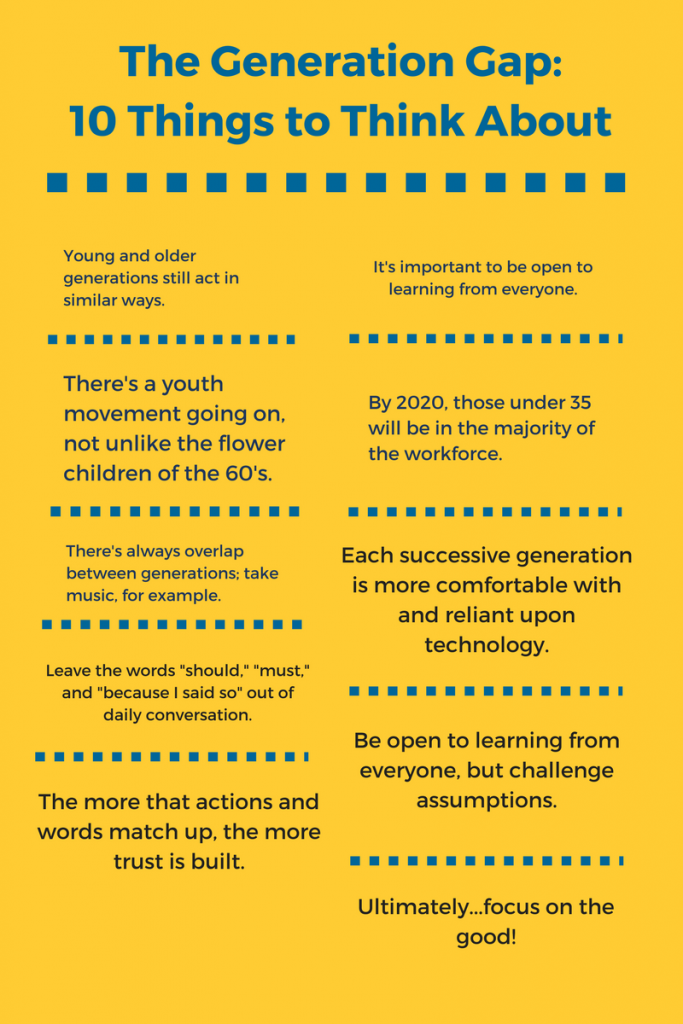By Chip Scholz, ScholzandAssociates.com
Chip Scholz is Head Coach of Scholz and Associates, Inc. He is an executive coach, facilitator, speaker and author. His coaching clients include CEOs and their staffs from industry and association management. Read his full bio here, or call Chip at (704) 827-4474. Check out Chip’s blog at chipscholz.com.
Much has been made of the term for the group made up of twenty to thirty-five year olds. The term used most often is “Millennials.” Several consultants have made a nice living by telling the “rest” of us how to communicate, how to treat “them”, how to be more effective in the workplace with “them.” I find it disingenuous at best, and harmful at worst. It occurs to me that putting 80 million people into a neat box and ascribing certain characteristics to “them” isn’t possible, or practical. The 80 million people that are known as Boomers are probably the ones that made this all up, probably because we are trying to figure out this alien species that are likely our grandchildren. By the way, nothing drives a young person crazier than being called a millennial.
In the book, Pendulum, by Roy H. Williams and Michael R. Drew, the authors describe people in terms of their life cohorts rather than birth cohorts. In other words, to say that all people under 35 are technological savants and all people over 55 are knuckle-dragging cavemen with land-line phones and no access to technology would just be wrong. Twenty-five percent of the US population has no access to broadband or smart phones, and that cuts across all age groups. On the other hand, I know as many technically brilliant people that have lived far into their seventies. Williams and Drew said that people who shared a philosophy, regardless of their age, had more in common than just someone the same age. Makes too much sense, doesn’t it.
I was recently on a plane sitting in first class eating a nice lunch on the way back from Phoenix. The gentleman sitting next to me looked at his lunch and said to me: “This certainly isn’t what it used to be.” I asked him what he meant, and he went on to tell me all the ways things “used to be.” My reply? Nothing is what it used to be. Nothing IS. It doesn’t make it bad or good.
Our conversation quickly slipped into the challenges of the rising numbers of young people joining the workforce and what’s coming in the next ten years. While none of us can predict what those challenges will be, there’s no doubt that a new generation gap is already here and getting bigger.
Here are 10 things to think about:
1. The generation gap is convenient for writers, social commentators and consultants who make a living from singling out problems. People are still people. While many unique attributes are ascribed to people under 35 years old, young people still act and react in very similar ways as others. Their ranks include workers and slackers, poets and pirates. While many of the ways they choose to act, dress, and communicate are different, different isn’t bad or good. It’s just different. Isn’t it a much more interesting place to live when people are different?
2. There are many shifting societal changes happening right now, and we are in the midst of a transition from one generation to another. It’s big and it’s happening. It isn’t as obvious as a comet and you can’t stop it by shooting at it; it will happen whether anyone likes it or not. Under 35 is the biggest demographic in the work force, and by 2020 under 35 will be the majority of the workforce.
3. The Boomer generation needs to accept that there is another youth movement going on. While the over 50 set may be able to claim the moral high ground on peace, love and rock-n-roll, we are seeing another large, vital generation that wants to do things their way. It might or might not be the same way Boomers did it. Get over it!
4. There has never been a time when there was more overlap between generations in one way: music. Parents and kids are listening to the same things. When you go to an “old folks” concert (The Doobie Brothers or Eagles comes to mind), you see just as many kids as you do parents. Next time you have the chance, compare the contents of each generations’ playlists on iTunes. Yep, pretty much the same content.
It occurs to me that putting 80 million people into a neat box and ascribing certain characteristics to “them” isn’t possible, or practical.
5. I overheard this statement the other day in a conversation between a twenty-something and a forty-something: “The difference between us is you still use the phone to talk.” Each successive generation is more comfortable with technology and is more reliant on it. Each group will have to learn to adapt.
6. There is a tremendous opportunity to work together, as long as the Boomers don’t get too parental. While a command and control management style may have been a good industrial/manufacturing strategy, it’s not for those under 35. Words like “should,” “must” and “because I said so,” might be better left out of daily conversation. I don’t think the Boomers wanted to be told what to do; why does anyone think that kids of Boomers want to either?
7. For the younger set: Be open to learning from everyone, but decide for yourself. You have to frame your decisions with the information and background you have. Know when to seek out the pieces to the puzzle you don’t yet have. Context matters.
8. For the older set: Be relevant. Be open to learning from everyone, and challenge the assumptions of a lifetime. People, places and things are evolving all the time. Are you?
9. For all ages, remember one word: congruence. The more actions and words match up, the more trust is built.
10. Finally, nothing ever stays the same. Let’s focus on the good!
What does this have to do with Logistics?
About 60% of my business is working with logistics companies, and they are all owned by families. Some are first generation, some are fourth, but they all have one thing in common. They are mostly run by forty-five to sixty-five-year-olds. What about the next generation? How are they being integrated into the business? What does the shift in population mean for leadership? Do we have a whole bunch of family owners heading into their late sixties that can’t let go? How are we going to handle succession when under thirty-five is the majority of the workforce?
My flight from Phoenix was interesting: my seatmate and I were sitting in chairs in the sky, participating in the miracle of human flight, having a nice lunch and a conversation. How great is that?

Related blog posts to check out:
7 Ways to Attract and Retain Millennial Employees
